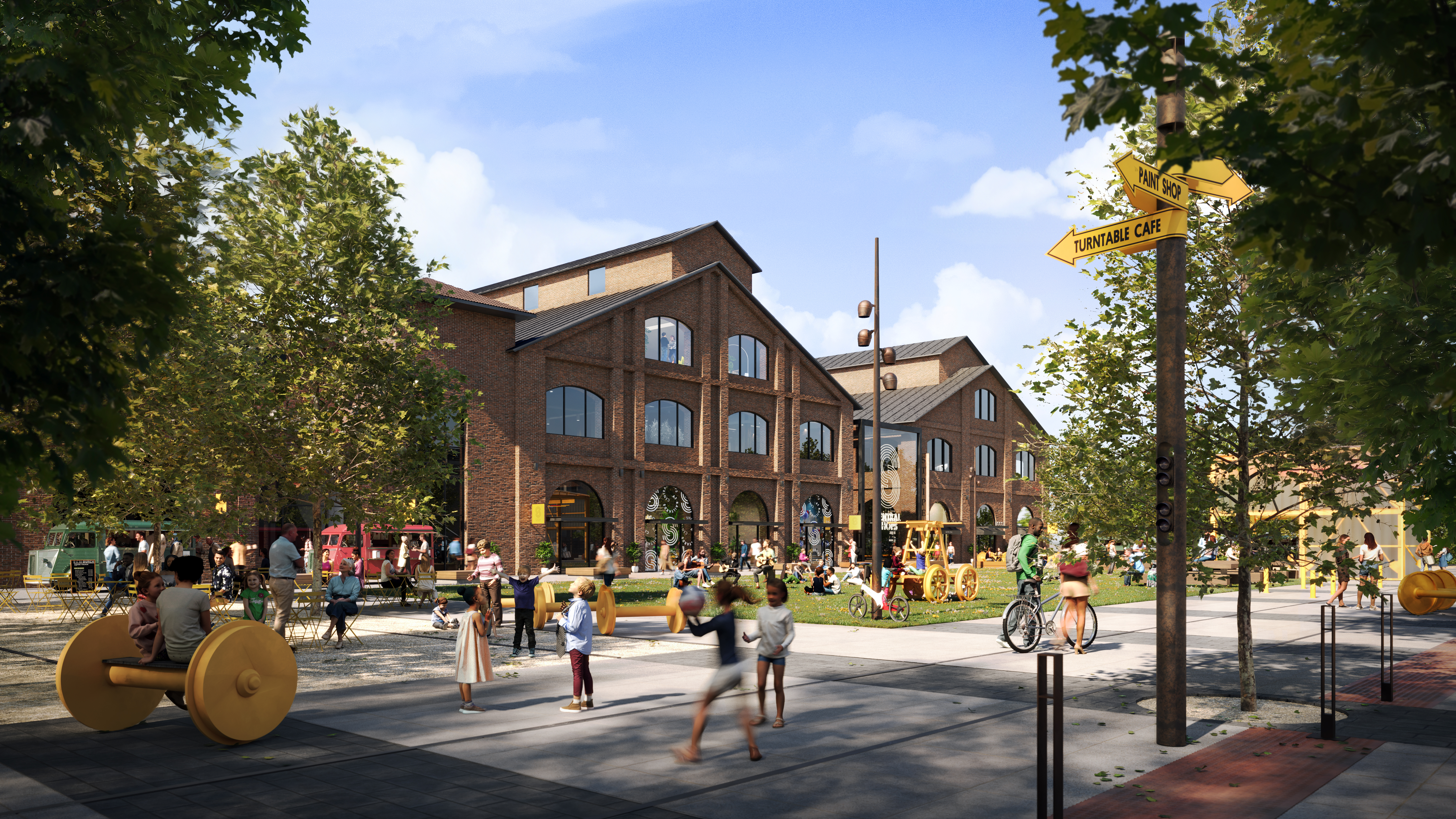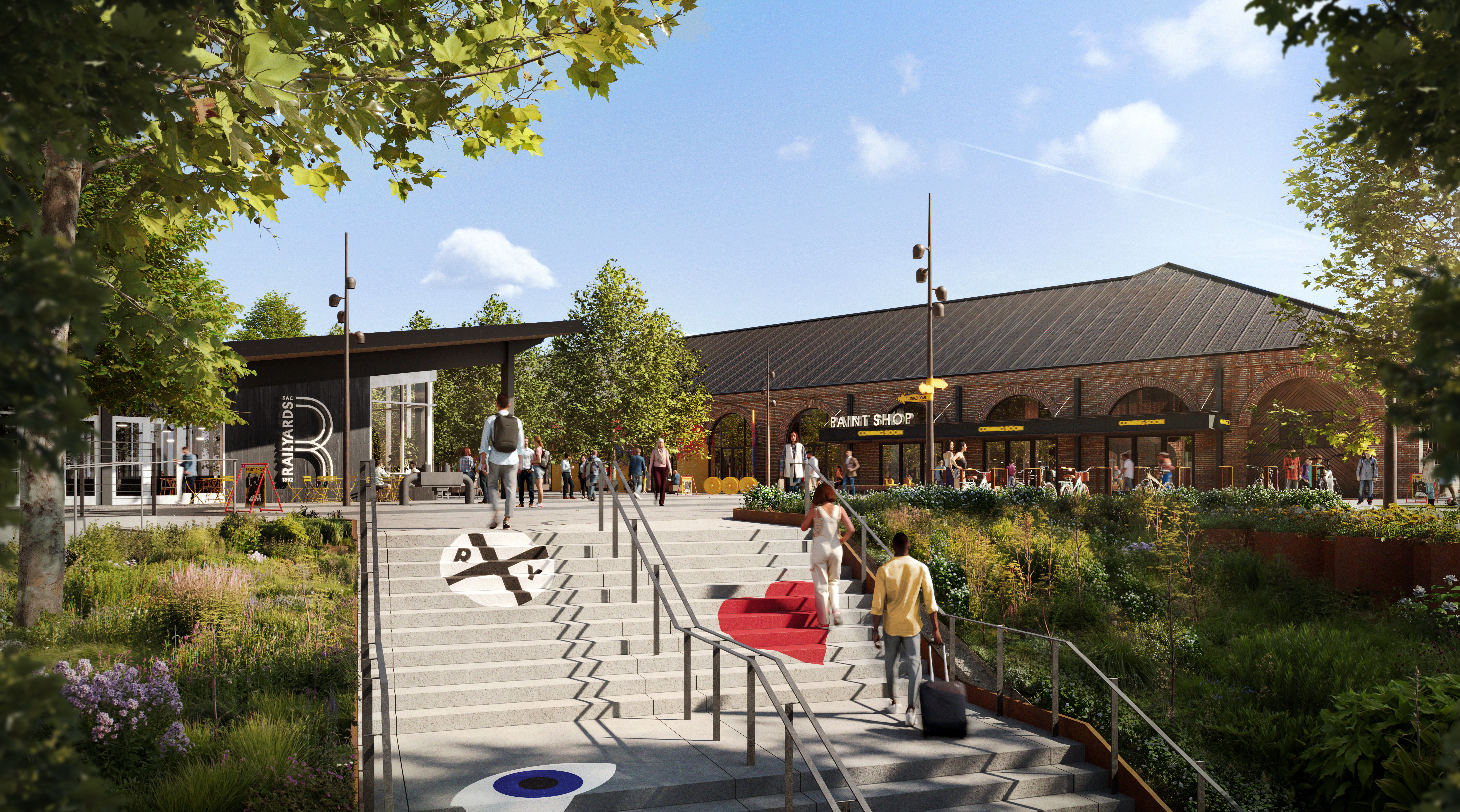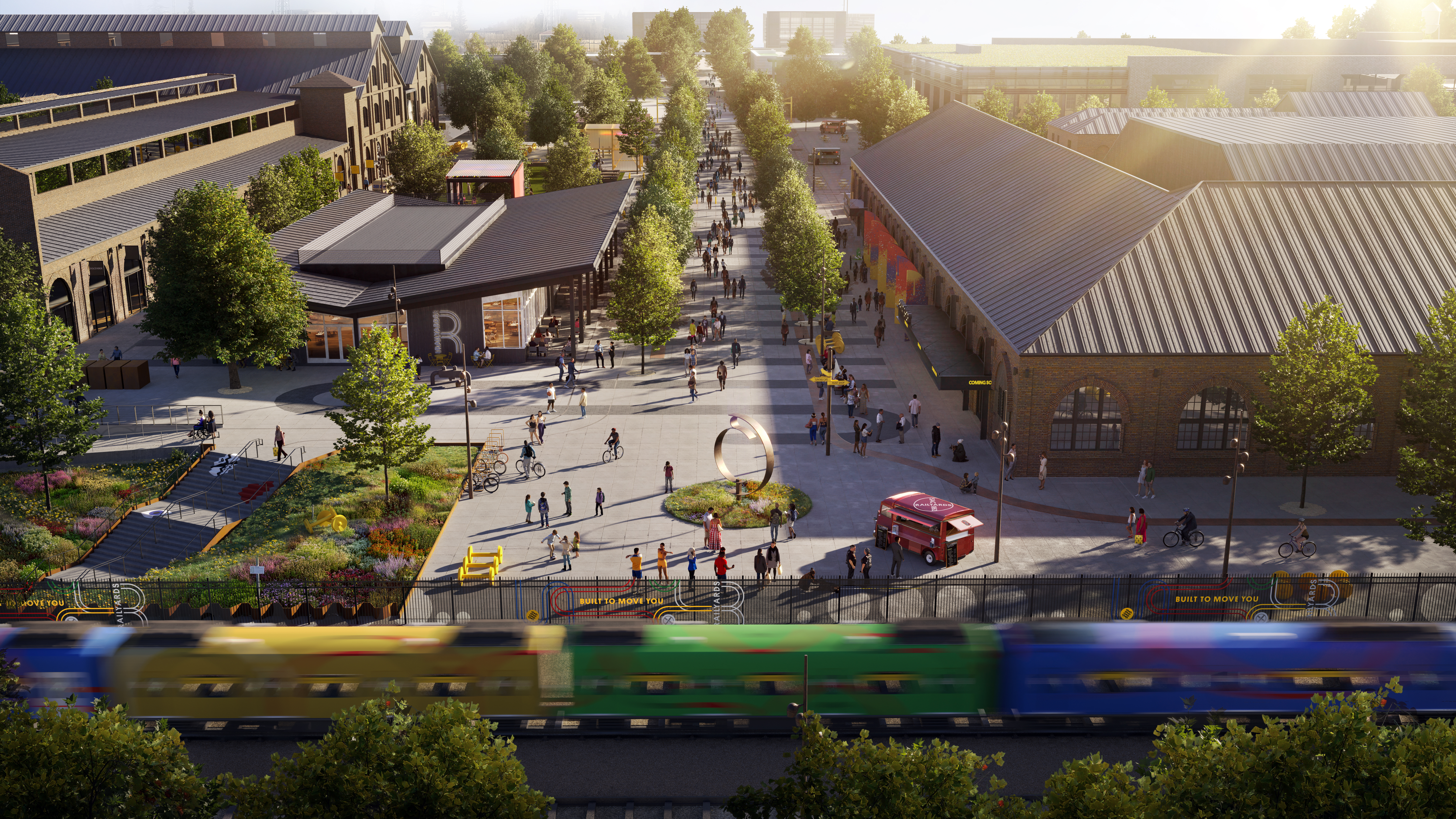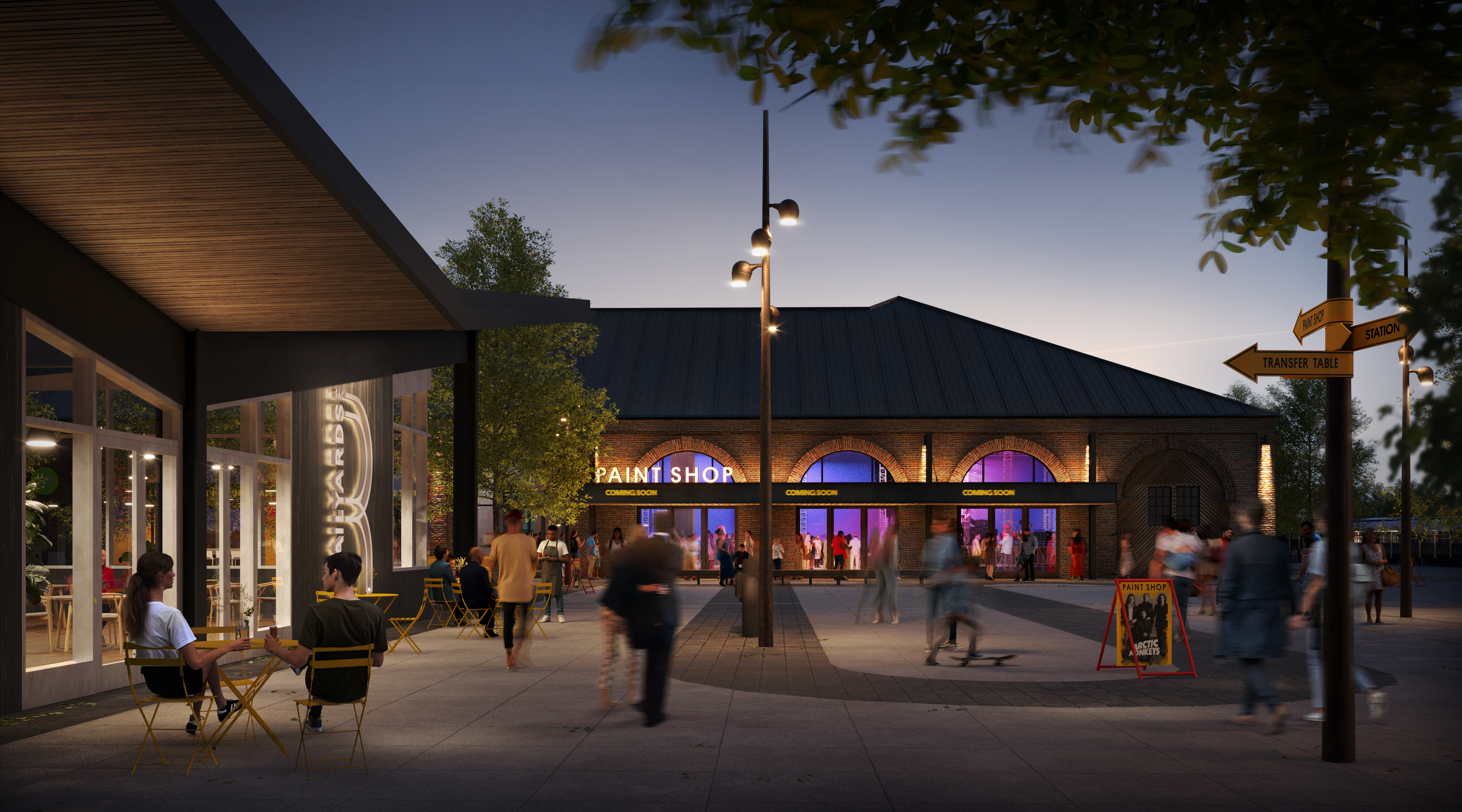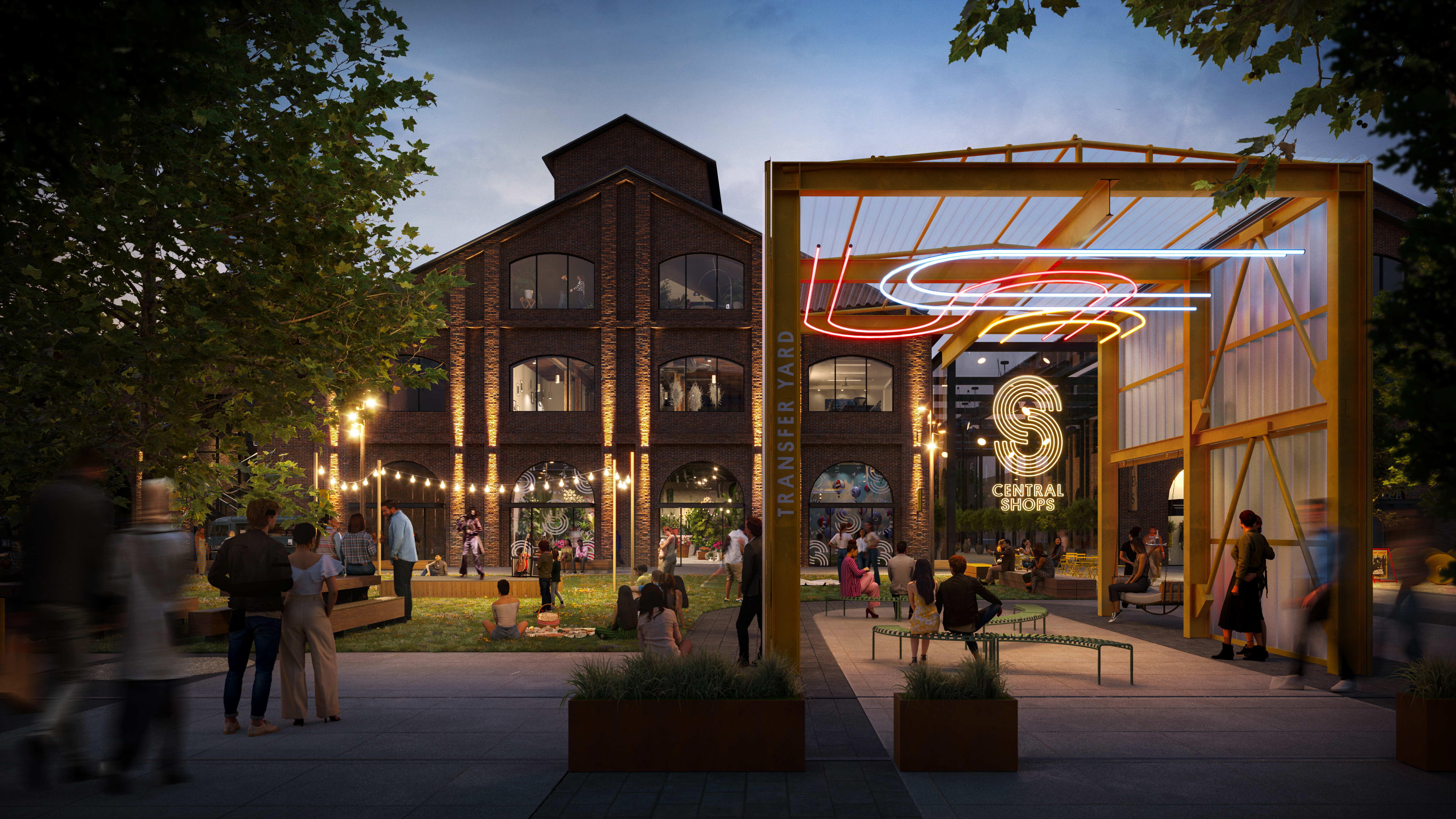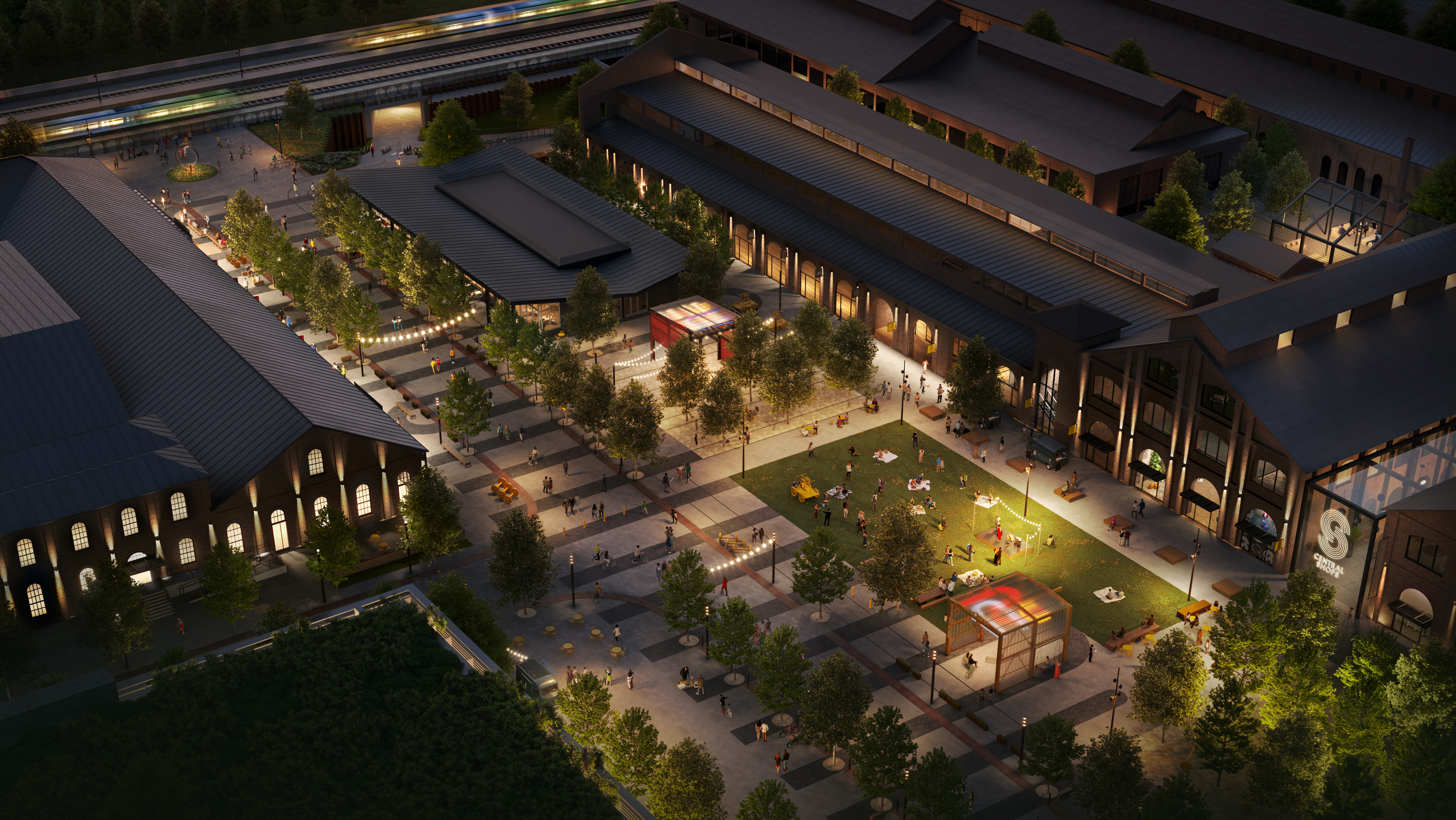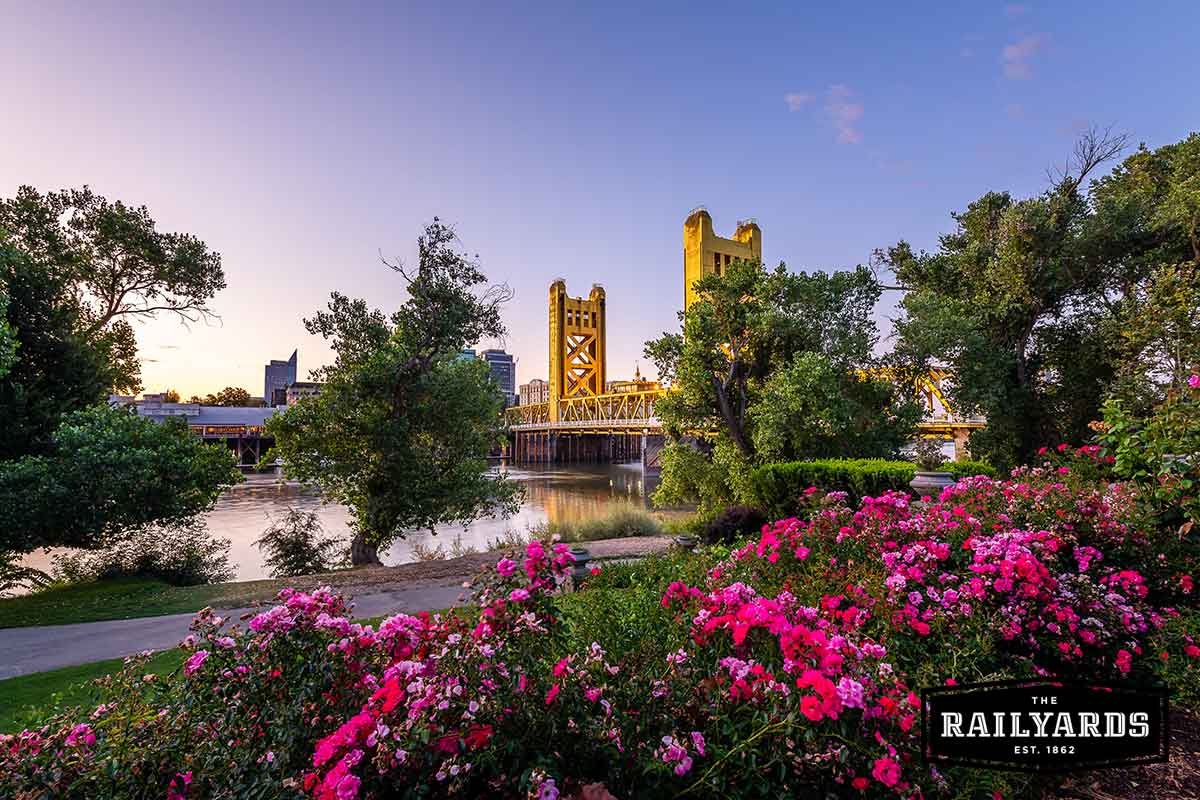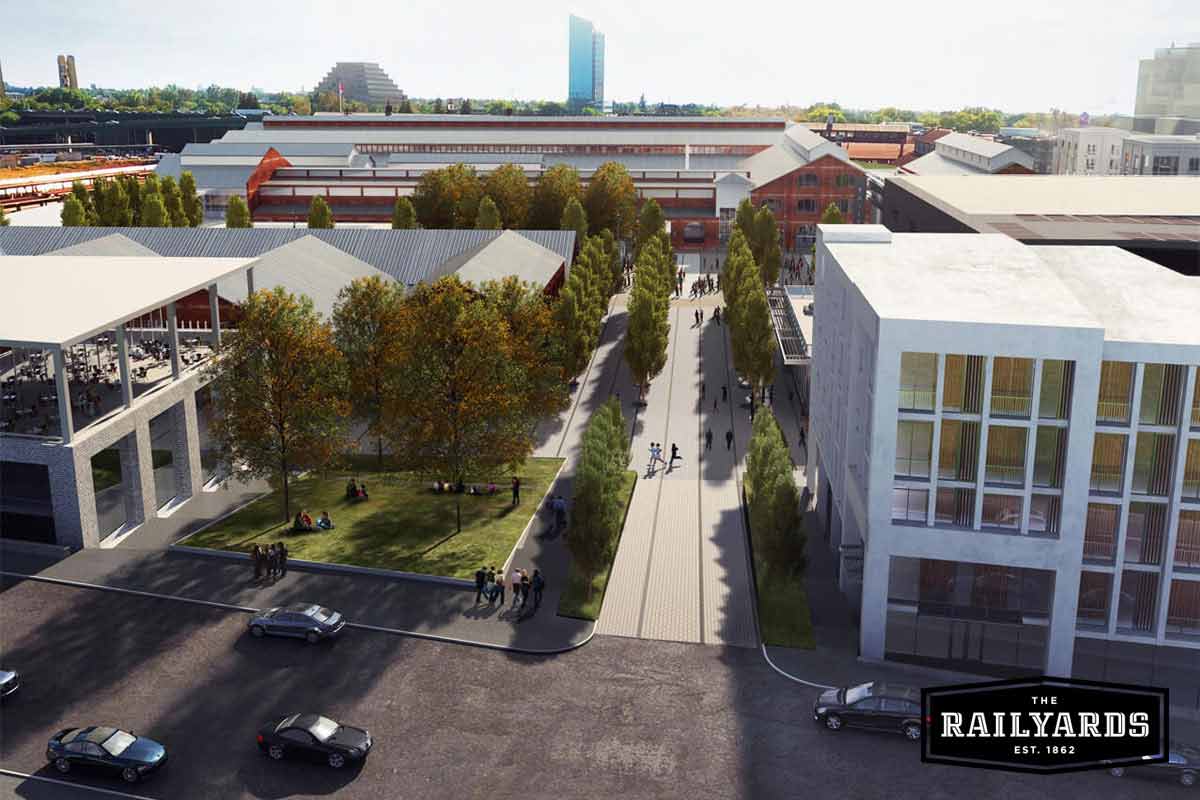
January 10, 2024 / Author: the Railyards
Smart growth strategies create safer, healthier, more successful communities. Discover the smart growth strategies being implemented in The Railyards.
Development impacts everyone. What, where, and how we build can affect our community, our health, schools, economic growth, and many other aspects of our lives.
Smart growth strategies empower communities to develop safe, healthy, and attractive neighborhoods and create a bright future for generations to come.
Discover what smart growth strategies look like and how they’re being implemented in the Sacramento Railyards.
“In neighborhoods where services and jobs are lacking, development can bring them. In neighborhoods where housing is unaffordable, development can supply new options nearby. When development is based on smart growth principles, it increases opportunities and the chance to achieve the American Dream.” - This is Smart Growth, epa.gov
10 Principles of Smart Growth
- Mix land uses
- Take advantage of compact building design
- Create a range of housing opportunities and choice
- Create walkable neighborhoods
- Foster distinctive and attractive communities with a strong sense of place
- Preserve open space, farmland, natural beauty, and critical environmental areas
- Strengthen and direct development towards existing communities
- Provide a variety of transportation choices
- Make development decisions fair, predictable, and cost-effective
- Encourage community and stakeholder collaboration in development decisions
1. Mixed Land Uses
Mixed land use is a critical component of smart growth strategies. Mixed land use puts residential, commercial, and recreational uses in close proximity to one another.
According to smartgrowth.org, mixed land use provides viable alternatives to driving, such as walking and biking. It can enhance the vitality and security of a neighborhood while revitalizing a community by making streets, public spaces, and pedestrian-oriented retail places where people meet.
Mixed land use is the core of the Sacramento Railyards infill development project.
The Railyards project combines multiple planned use concepts, mixing dense urban residential neighborhoods with a historical museum, shopping and market district, intermodal transit station, medical campus, shopping and entertainment complexes, courthouse, riverfront access, and vertical high-rise buildings combining office, housing, and retail uses.
Current projects underway at the Railyards include:
- Residential housing: The AJ features 345 residential units and 5,000 sq feet of ground floor retail and is expected to open in 2024.
- Residential senior housing: Wong Center features 145 affordable residential units for seniors aged 55 and older and is expected to open in 2024.
- Mixed-use commercial: The Foundry includes two six-story buildings designed for office, retail, and restaurant use. Completion date has not yet been determined.
- Kaiser Permanente Medical Center: a state-of-the-art medical center on 18 acres is currently under plan review. Completion date has not yet been determined.
- New Sacramento Courthouse: covering an entire city block, the new Sacramento criminal courthouse is 18 stories high and houses 53 new courtrooms; it is anticipated to open in 2024.
2. Compact Building Design
When developers build up—rather than out—it preserves more open space and makes more efficient use of land and resources.
The Railyards Specific Plan supports a mix of retail, entertainment, office, and civic uses, including low-, mid-, and high-rise buildings similar to those in Downtown Sacramento.
Building up not only uses land efficiently but also allows the preservation of more open land to help absorb and filter rainwater, reducing flooding and stormwater drainage needs while reducing the amount of pollution that washes into streams, rivers, and lakes.
3. More Housing, More Choice
Providing a range of housing opportunities and choices for people of all income levels is an integral component of any smart growth strategy.
California has its fair share of housing challenges. Infill development projects like The Railyards can help address these challenges by supplying more housing inventory and various housing types and offering more affordable housing options.
The Railyards plan calls for the construction of up to 10,000 new dwelling units of varying types. Various housing types are envisioned to attract buyers and renters, ranging from apartments to condominiums, townhomes, lofts, and live-work units.
The first two housing projects in the Sacramento Railyards, The AJ and the Wong Center, both include affordable housing units.
4. Walkable Neighborhoods
A walkable community encourages pedestrian and bicycle activity.
Walkable communities bring together housing, offices, retail, entertainment, transportation, and schools located within a safe and easy walk. Neighborhoods are designed to encourage pedestrian activity rather than car trips.
Walkable communities benefit resident health, community livability and quality of life, and long-term sustainability.
The Railyards Specific Plan calls for the area to be an active, walkable community, with streets, blocks, and land uses that encourage pedestrian and cycling activity.
5. Distinctive Attractive Places
Smart growth seeks to create interesting, unique communities that reflect the values and cultures of the people residing while fostering physical environments that support a more cohesive community fabric.
One of the nine Railyards Specific Plan goals is to create an attractive and distinctive urban place.
The Railyards has been planned in a way that will reinforce and continue many of the existing elements in Downtown Sacramento, including the distinctive pattern of blocks and streets in the Central City. Streets will be designed to be pedestrian-friendly, and buildings will extend and reinforce Sacramento’s fabric and skyline.
In addition to continuing many existing elements found downtown, The Railyards will have its own distinctive look and feel inspired by the rich history and historical buildings in the area.
6. Preserve Open Space and Natural Beauty
Parks, plazas, and green open spaces provide a number of economic, environmental, physical, and psychological benefits in urban settings.
Open space is an important part of a healthy, sustainable, and economically successful community - and a smart growth principle is taking place in The Railyards.
The Railyards is located at the confluence of the Sacramento and American Rivers, an area highly valued for its recreational and habitat resources. The Railyards will help connect Downtown to the rivers, making them a more integral part of the Downtown experience.
The Railyards plan includes areas of multi-functional “green infrastructure” consisting of natural areas, open space, parks, and plazas. These green, open spaces serve as a defining physical feature of Sacramento, providing visitors and residents with access to open space and recreation.
7. Strengthen and Direct Development Towards Existing Communities
Sprawl is a development concept defined as low-density development characterized by unlimited outward extension and automobile dependence.
Even though planning experts have denounced sprawl as wasteful, inefficient, and unsustainable, sprawl remains the predominant growth pattern throughout the United States.
Infill development is an alternative to sprawl. Infill is the process of developing vacant or under-used parcels within existing developed urban areas.
Infill development can reduce development pressures on outlying areas, therefore protecting lands. By reducing the amount that people drive, infill development helps to improve air quality while reducing greenhouse emissions. It also benefits communities economically by increasing the number of homes and businesses in existing urban areas.
The Railyards is one of the nation’s largest infill development projects. 244 acres of historically significant land is being transformed into a thriving mixed-use community that will essentially double the size of Downtown Sacramento.
8. Varied Transportation Choices
Transportation and land use patterns are inextricably linked.
Transportation can shape development, communities, property values, and economic opportunity. In addition, transportation investments can have important consequences for the environment.
When homes, offices, retail, entertainment, and civic buildings are near transportation and close to one another, it is more convenient to walk, bike, or take alternative (non-auto) transit modes. These expanded transportation choices make it easier to get more physical activity, reduce transportation costs, and give more freedom of mobility to senior, disabled, and low-income individuals.
The Sacramento Valley Station sits on the Southern border of The Railyards development and serves as the region’s transit hub.
The station connects transit riders to AMTRAK, light rail, electric bike rentals, and a future expansion line for a streetcar system. The Sacramento Valley Station recently underwent a $30 million renovation to become a state-of-the-art operation for multiple modes of transportation—right at the edge of The Railyards development.
9. Fair, Predictable, Cost-Effective Development Decisions
For a community to successfully implement smart growth, the private sector must embrace the concept.
The Sacramento Railyards development is highly attractive to the private sector. One of the anchor tenants for The Railyards, Kaiser Permanente, is constructing a new 18-acre, 1.2 million square foot medical center campus in The Railyards. The state-of-the-art project includes a 310-bed hospital with 17 operating rooms and a 90-bay emergency department. The plans also include a five-story hospital support building, a central utility plant, and a seven-story parking garage to be built on the 18-acre site.
Kaiser Permanente is investing heavily in the Sacramento region, recently unveiling their Downtown Commons Medical Offices. One block away, Kaiser Permanente also has a sports medicine center.
For smart growth to flourish, state and local governments need to make development decisions about smart growth that are more timely, cost-effective, and predictable for developers. By creating a supportive environment for the development of innovative, pedestrian-oriented, mixed-use projects, government can provide smart growth leadership for the private sector.
In Sacramento, the goals of the Central City Specific Plan look to infill development to pave the way for at least 10,000 new places to live, develop a diverse array of housing stock, and remove housing development barriers by streamlining growth and environmental review processes.
10. Encourage Community Collaboration in Development Decisions
Growth can create great places to live, work, and play—if it responds to a community’s own vision of how and where it wants to grow.
The needs of every community and the programs to address them are best defined by the people who live and work there.
Since 2002, the City of Sacramento has performed significant community outreach to determine how best to plan The Railyards. In 2004, the City conducted a Visioning Process for the area’s development consisting of a series of public workshops to generate community input.
Most participants preferred higher-density housing, ground-floor retail, affordable units, live/ work spaces, and a 24-hour mixed-use district that wouldn’t “shut down after 5 pm.” The community also expressed a desire for a walkable and bikeable community with close access to transit.
The Railyards continues to seek community feedback on the development, asking the community: “What’s your vision for The Railyards?" in the form of an online survey. Your responses have been tremendous.
A Smart Growth Development: The Sacramento Railyards
Smart growth principles are guiding The Railyards, a 244-acre infill development project in Sacramento. By focusing on smart growth principles, the Railyards provides opportunities for improved land use efficiency, reduced greenhouse gas emissions, healthy jobs-housing balance, multi-modal connectivity, and advanced green building practices. This redevelopment site offers a unique opportunity to reinforce and implement the City of Sacramento’s goal of becoming “the most liveable city in America.”

